Quais baterias são usadas no BESS?
Quando você explora o mundo dos sistemas de armazenamento de energia de bateria (BESS), uma questão fundamental vem à mente: o que realmente há dentro? Qual é a principal tecnologia de bateria que armazena de forma tão eficaz a energia dos seus painéis solares ou da rede, pronto para alimentar sua casa ou empresa quando você mais precisar?
A grande maioria dos BESS modernos instalados hoje, de projetos residenciais a grandes projetos de utilidade pública, usar Baterias de íon de lítio. Especificamente, a química preferida e dominante para armazenamento estacionário de energia é LFP (Fosfato de ferro-lítio ou LiFePO₄). Esta tecnologia é escolhida por sua combinação superior de segurança, vida útil muito longa, e excelente estabilidade, tornando-o o padrão ouro para confiabilidade, desempenho a longo prazo.
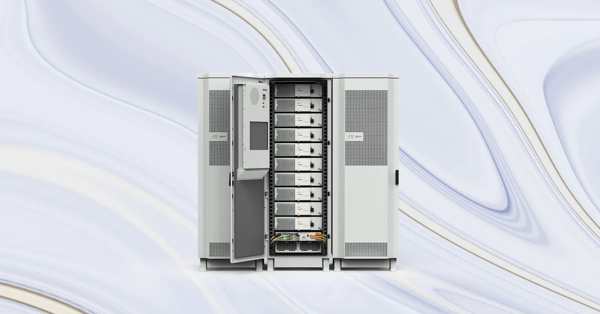
No GYCX Solar, nosso compromisso com a segurança e o valor de longo prazo para nossos clientes é o motivo pelo qual projetamos exclusivamente nossos baterias soluções em torno da tecnologia LFP. É o comprovado, escolha profissional. Vamos explorar mais sobre esses sistemas poderosos.
Qual é a vida útil de uma bateria Bess?
Um BESS é um significativo, investimento de longo prazo na infraestrutura energética da sua propriedade. Então, uma questão crítica é: quanto tempo durará o componente da bateria, o coração do sistema, na verdade, último?
A LFP (Fosfato de Ferro Lítio) bateria dentro de um BESS moderno foi projetada para resistência, com uma vida útil operacional esperada de 10 para 20 anos. Em termos de uso, essas baterias são classificadas para um impressionante 3,000 para superar 6,000 ciclos de alta carga de carga. Para proporcionar aos clientes confiança nesta longevidade, fabricantes respeitáveis normalmente respaldam seus produtos BESS com uma garantia abrangente de 10 anos.
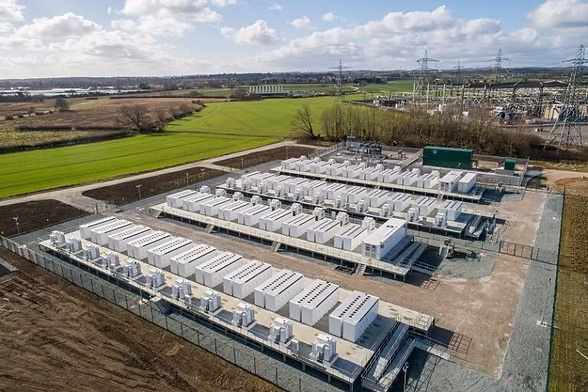
Mergulhe mais fundo: Os ingredientes de uma bateria de longa duração
A impressionante vida útil de uma bateria BESS moderna não é por acaso; é o resultado de uma química superior e de um design de sistema inteligente:
- Química LFP: LFP é inerentemente mais estável e robusto do que outros produtos químicos de íons de lítio. Pode suportar o estresse do ciclismo diário (carregando de energia solar durante o dia, descarregando à noite) por muitos anos sem degradação significativa. Uma bateria classificada para 6,000 Os ciclos poderiam teoricamente durar mais 16 anos com um ciclo por dia.
- BMS inteligente: O sistema de gerenciamento de bateria integrado (BMS) atua como guardião, protegendo constantemente as células da bateria contra o estresse, evitando sobrecarga, Dischar demais, e garantindo que todas as células estejam equilibradas.
- Gerenciamento térmico: O BESS é um sistema projetado com gerenciamento térmico integrado. Isto é crucial no clima quente e úmido de Cingapura. Mantendo as células da bateria dentro da faixa ideal de temperatura, o sistema evita o envelhecimento acelerado que o calor pode causar, contribuindo diretamente para uma vida mais longa.
- A garantia: Uma garantia de 10 anos é o padrão da indústria para residências de qualidade BESS. Normalmente garante que a bateria mantenha uma certa quantidade de sua capacidade original (Por exemplo, 70%) até o final do prazo, fornecendo uma referência clara para o seu desempenho a longo prazo.
Quais são os três principais tipos de BESS?
Um BESS para uma única casa é o mesmo usado para sustentar a rede elétrica de uma cidade inteira?? De jeito nenhum. A tecnologia BESS é incrivelmente escalável, e normalmente é categorizado em três tipos principais com base em sua aplicação e tamanho.
Os três principais tipos de BESS são:
- Residencial BESS: Sistemas de pequena escala projetados para residências individuais.
- Comercial & Industrial (C&EU) BESS: Sistemas de média escala para empresas, fábricas, e outras propriedades comerciais.
- BESS em escala utilitária: Enorme, sistemas em nível de rede pertencentes e operados por empresas de energia.
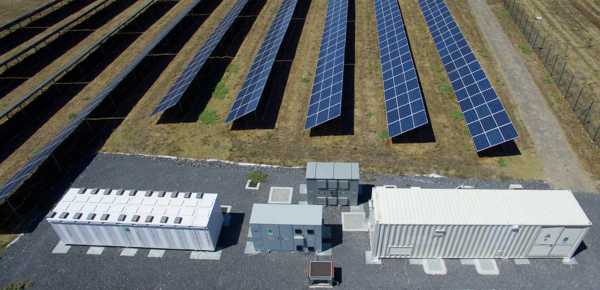
Mergulhe mais fundo: Da sua casa para a rede
Vejamos a finalidade de cada tipo:
- Residencial BESS:
- Tamanho: Tipicamente 5 kWh para 30 kWh.
- Propósito: Os principais objetivos são maximizar o autoconsumo solar (armazenando energia solar diurna para usar à noite, o que é ótimo para gerenciar altas tarifas de eletricidade em Cingapura), fornecer energia de reserva durante interrupções na rede, e aumentar a independência energética.
- Fator de forma: Geralmente uma unidade elegante montada na parede ou um compacto, sistema de rack empilhável.
- Comercial & Industrial (C&EU) BESS:
- Tamanho: De 30 kWh para vários megawatts-hora (MWH).
- Propósito: Usado principalmente para "raspar picos" para reduzir custos de demanda caros, maximizando o uso solar no local, e fornecendo energia de backup para operações críticas.
- Fator de forma: Muitas vezes, gabinetes internos maiores ou gabinetes para uso externo.
- BESS em escala utilitária:
- Tamanho: Muito grande, de dezenas a milhares de MWh.
- Propósito: Para estabilizar toda a rede elétrica. Eles armazenam grandes quantidades de energia proveniente de parques solares ou eólicos em grande escala., fornecer serviços de rede como regulação de frequência, e substituir o poluente "pico" usinas de energia.
- Fator de forma: Geralmente consiste em fileiras de grandes, envio de unidades do tamanho de um contêiner.
No Gicx Solar, somos especializados em projetar e instalar residências e C de alto desempenho&Soluções I BESS adaptadas às necessidades energéticas únicas dos nossos clientes em Singapura.
BESS é AC ou DC?
Quando você entra nos detalhes técnicos do BESS, você ouvirá os termos AC (Corrente alternada) e DC (Corrente contínua). O próprio BESS é um ou outro? A resposta é ambas: atua como uma ponte inteligente entre os dois.
Um BESS é fundamentalmente um Dispositivo CC em sua essência, porque as baterias armazenam e liberam energia DC. No entanto, ele usa um inversor sofisticado (o sistema de conversão de energia, ou PCS) para se conectar às nossas casas e à rede, que uso Alimentação CA. A forma como o BESS e seu inversor estão conectados a um sistema de painel solar determina se é um sistema "acoplado a CA"." ou "acoplado DC" sistema.
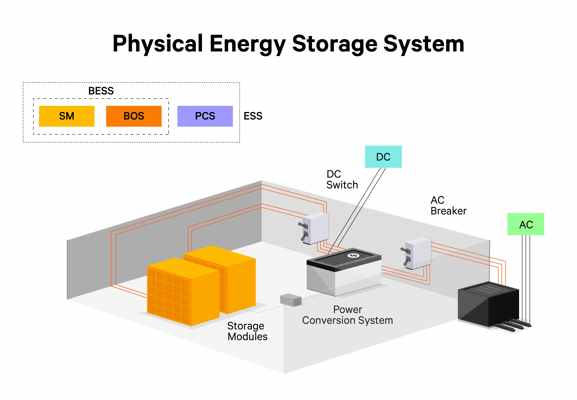
Mergulhe mais fundo: CA-Coupoxo vs.. Sistemas acoplados a CC
Aqui está um rápido resumo das duas principais arquiteturas para energia solar + armazenar:
- Acoplado a CC: Os painéis solares (que produzem energia DC) e as baterias (que armazenam energia DC) estão conectados no mesmo lado de um único inversor híbrido. Isto permite que a energia DC dos painéis carregue as baterias DC de forma direta e muito eficiente. Este é frequentemente o método preferido para novos, instalações integradas.
- Acoplado a CA: Os painéis solares possuem seu próprio inversor solar, e o sistema de bateria tem um segundo, Interior separado da bateria. Ambos se conectam ao painel AC da casa. Para carregar a bateria da Solar, a energia CA do inversor solar é convertida de volta em CC para a bateria. Este método é excelente para modernizar uma bateria em uma casa que já possui um sistema de painel solar.
História solar Gycx: "Quando um cliente nos pergunta isso, explicamos que a melhor escolha depende da situação deles. Para uma nova propriedade em Cingapura reunindo energia solar e armazenamento, provavelmente recomendaremos um sistema acoplado DC altamente eficiente. Para um cliente com um sistema solar de 5 anos que agora deseja adicionar backup, um BESS acoplado a CA é a solução perfeita."
Quanto tempo dura um BESS?
Já falamos sobre a vida útil do componente da bateria, mas e toda a unidade BESS? Quanto tempo você pode esperar que todo o sistema dure?
Um BESS completo foi projetado para uma longa vida útil, mas componentes diferentes têm vida útil diferente. O Módulos da bateria, como observamos, normalmente dura 10 para 20 anos. O outro componente eletrônico importante, o inversor (ou PCS), geralmente tem uma expectativa de vida de 10 para 15 anos. Portanto, você pode esperar uma vida operacional muito longa do seu sistema, com a possibilidade de substituição planejada do inversor uma vez durante a vida útil total da bateria.
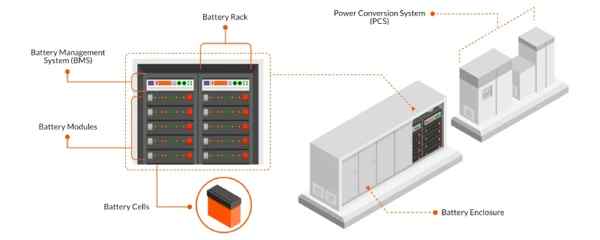
Mergulhe mais fundo: Vida útil dos componentes do sistema
Um BESS é uma coleção de componentes de alta qualidade projetados para funcionarem juntos:
- Módulos da bateria: As baterias LFP são a parte mais duradoura, graças à sua química robusta projetada para milhares de ciclos.
- Inversor (PCs): Este é o carro-chefe do sistema. Como uma peça complexa de eletrônica de potência que gerencia constantemente cargas de alta potência e lida com calor, seus componentes (como capacitores e ventiladores) envelhece naturalmente. A 10-15 a vida útil de um ano é uma expectativa típica para um inversor híbrido de alta qualidade de uma marca confiável. Muitos vêm com garantia de 10 anos para combinar com a bateria.
- Outros componentes: O recinto, fiação, Segurança desconecta, e outro hardware (o "Equilíbrio do Sistema") são todos projetados para durar toda a vida útil do sistema, desde que não estejam danificados.
- Planejamento de longo prazo: Isto significa que durante um período de 20 anos, você deve planejar o investimento inicial e uma possível substituição do inversor em torno do 10-15 marca do ano. Esta é uma parte normal da propriedade a longo prazo de um sistema energético sofisticado.
No GYCX Solar, construímos nossos sistemas usando apenas alta qualidade Componentes BESS1 dos principais fabricantes com fortes garantias, e somos transparentes com nossos clientes sobre a vida útil esperada de cada peça. Isso garante que você tenha uma compreensão clara do valor a longo prazo2 e plano de manutenção para o seu investimento.
A baterias sistema é inteligente, solução integrada que é fundamental para a gestão energética moderna. Alimentado por baterias LFP seguras e duradouras, é durável, ativo de baixa manutenção que proporciona segurança energética e economia financeira. Ao compreender seus componentes e como funciona, Você pode fazer um investimento confiante em seu futuro energético.
Se você estiver pronto para explorar como um BESS pode ser adaptado à sua casa ou empresa em Cingapura, Nossa equipe especialista da GYCX Solar está aqui para ajudar. Entre em contato conosco para uma consulta profissional hoje!
